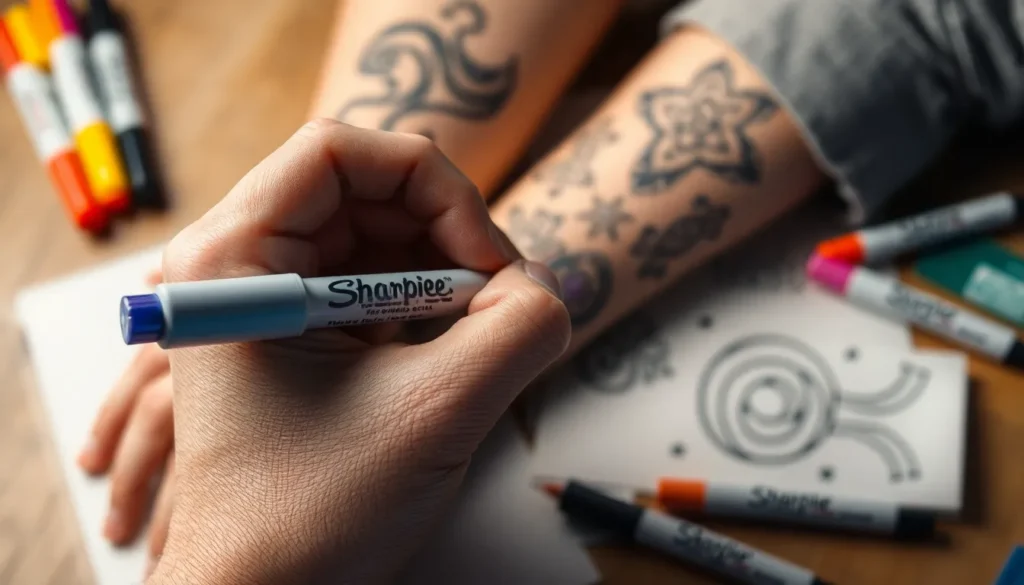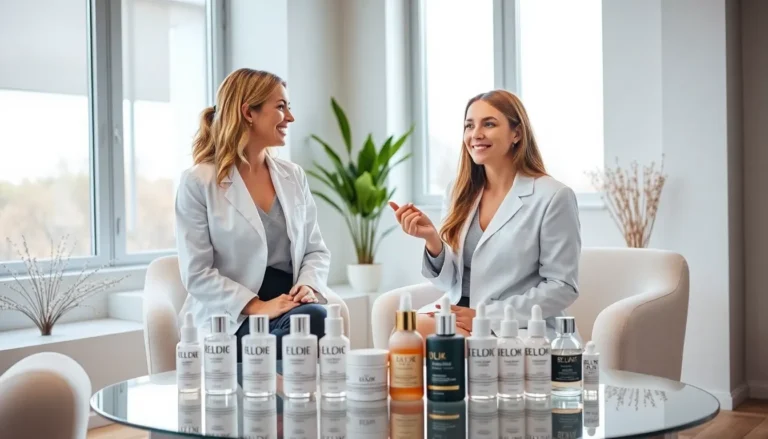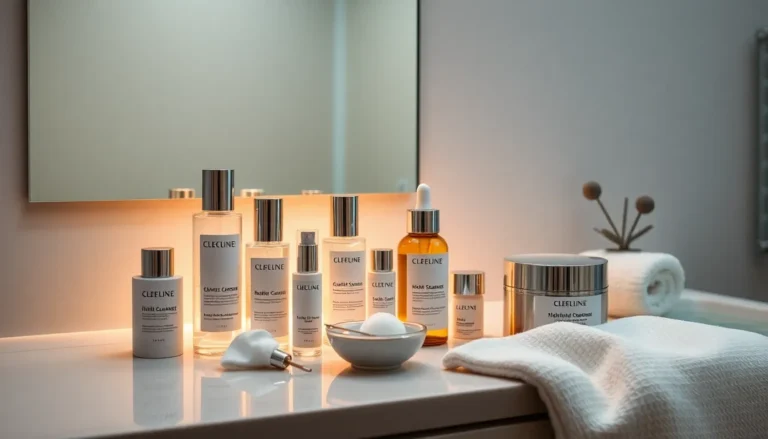Table of Contents
ToggleWhen creativity strikes, it’s tempting to grab that trusty Sharpie and let the artistic juices flow. But before turning your skin into a canvas, it’s worth asking: is Sharpie bad for your skin? While doodling on your arm may seem harmless, the truth might not be as colorful as you think.
Understanding Sharpies
Sharpies are popular for their bold colors and quick-drying ink. This section examines their composition and common applications to highlight potential risks.
What Are Sharpies Made Of?
Sharpies primarily consist of pigments and solvents. The ink contains colors derived from carbon black and dyes. Alcohol and other solvents help the ink dry quickly. Certain formulations also include resins to improve adhesion and durability. Although intended for various surfaces, the ingredients aren’t specifically designed for skin application.
Common Uses of Sharpies
People widely use Sharpies for numerous tasks. These markers excel in art projects, labeling items, and crafting homemade gifts. Many professionals rely on Sharpies for marking materials and organization purposes. Creative individuals enjoy using Sharpies for skin art, temporary tattoos, and personalized designs. Their versatility often overshadows the potential health risks associated with skin exposure.
Potential Risks of Sharpie Ink on Skin
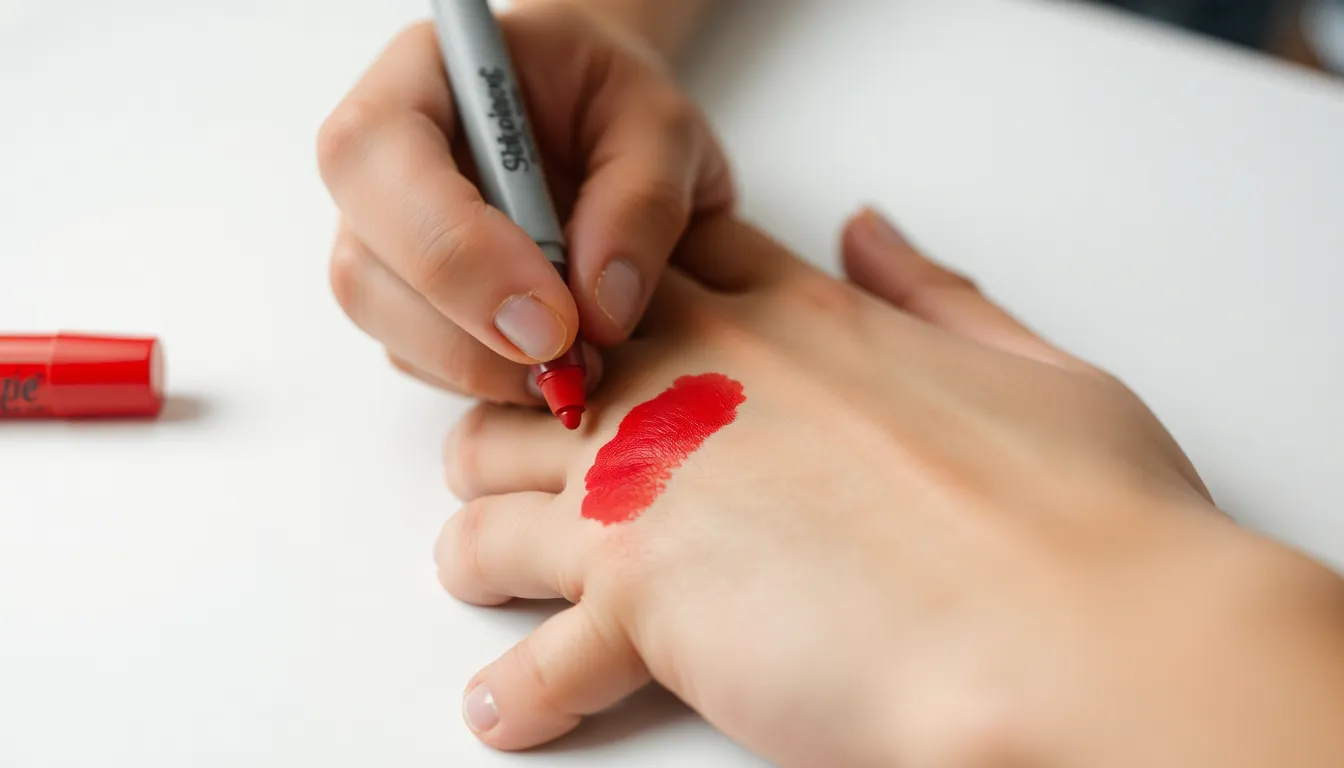
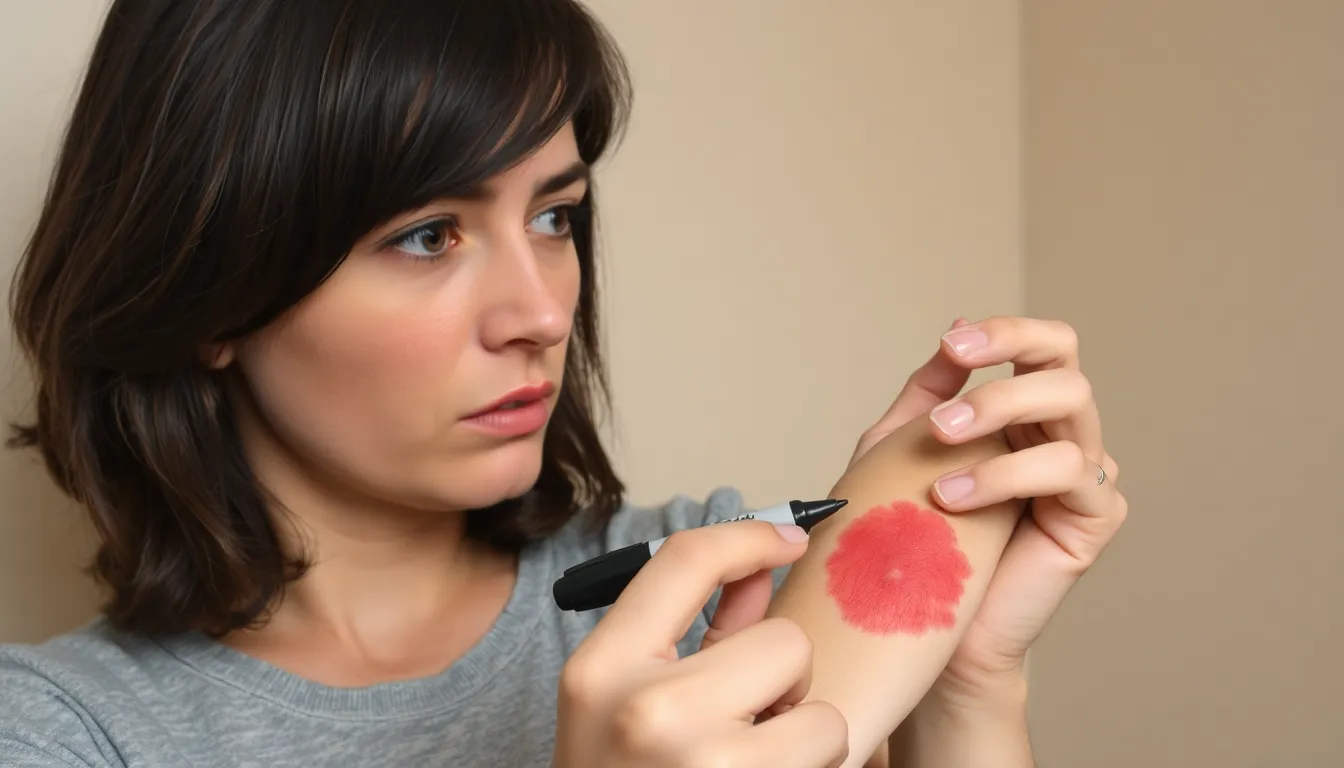
Sharpie ink poses various risks when applied to the skin. Understanding these risks can help in making informed choices regarding skin exposure.
Allergic Reactions
Allergic reactions to Sharpie ink can occur, as individuals may have different sensitivities. Symptoms of an allergic response include redness, swelling, or itching. Notably, these reactions vary among people, and some may experience severe symptoms. Historical data indicates that ingredients in the ink, such as dyes and solvents, can provoke allergies in susceptible individuals. If irritation occurs after contact, reducing skin exposure is essential. Taking precautions before use, like testing on a small skin area, can also prove beneficial.
Skin Irritation and Sensitivity
Skin irritation often results from prolonged contact with Sharpie ink. The solvents and chemicals in the ink can strip natural oils from the skin, leading to dryness or discomfort. Additionally, sensitive skin might react more severely, resulting in rashes or blisters. Studies show that frequent application can exacerbate these irritations. Distressing sensations, such as burning or stinging, might signal an adverse reaction. Properly cleaning the skin after ink exposure is crucial. Individuals experiencing continued irritation should seek medical advice.
Evaluating Sharpie Ingredients
Sharpie markers contain various ingredients that may pose risks when applied to the skin. Understanding these components is crucial for assessing skin safety.
Non-Toxic vs. Toxic Components
Some ingredients in Sharpies are considered non-toxic, such as certain pigments and dyes. However, other components, including solvents like xylene and toluene, present toxicity concerns. These solvents serve to dissolve the ink and enable smooth application but can irritate the skin or cause allergic reactions. Examining ingredient labels can help identify potentially harmful substances. When exploring options for skin-safe markers, alternatives specifically formulated for skin use exist, often labeled as body art markers.
Effects of Long-Term Exposure
Prolonged contact with Sharpie ink can lead to significant skin issues. Continuous exposure may provoke allergic reactions in sensitive individuals, resulting in persistent rashes or dermatitis. Skin irritation commonly arises from the solvents, which can strip moisture and create dryness. Individuals who’ve used Sharpies extensively may experience symptoms like redness, itching, or even blistering. It’s advisable to limit skin exposure and seek immediate medical attention if serious reactions occur.
Safe Alternatives to Sharpies
Using safer options for skin art is essential for avoiding potential risks associated with Sharpie ink. Several skin-safe alternatives exist that provide vibrant colors without harmful chemicals.
Skin-Safe Markers
Body art markers offer a safer choice for creative expression on the skin. Specifically designed for skin application, these markers contain non-toxic inks. Examples include brands like Snazaroo and Tulip, which provide a range of colors. Users can apply them easily and remove them with soap and water without harming the skin. Many individuals find that these markers produce bright, vibrant designs while being gentle on sensitive skin.
Other Creative Tools for Skin Art
Temporary tattoos represent another safe avenue for skin art. These products usually use skin-friendly inks and adhesives, ensuring a pleasant experience. Applying these tattoos is simple, and they come in various designs, catering to different tastes. Likewise, face paints designed for festivals and events also provide a fun way to express creativity without the risk associated with Sharpies. Kid-safe formulas are widely available, ensuring peace of mind for parents engaging their children in artistic play.

